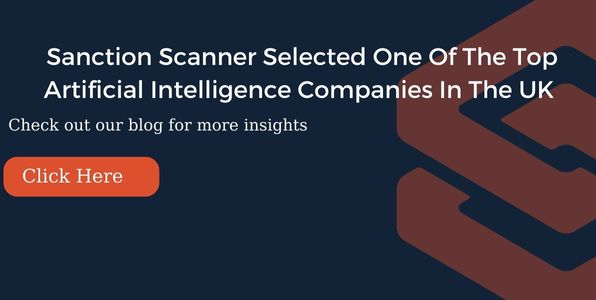Anti-Money Laundering Compliance (AML)
and Combating the Financing of Terrorism (CFT)
policies are procedures that meet the legal requirements of avoiding financial crimes. In general, only money laundering comes to mind, yet some associated crimes are also considered under this procedure, such as economic activities of terrorists, illegal trafficking, drug dealing, fraud transactions, etc. Countries and international regulatory institutions like European Union have obligatory programs for all related companies to prevent that kind of crime. Banking, payment system serving, insurance, gambling, and international transferring are some sectors that are liable to satisfy these requirements. While the risk is increasing daily for both small FinTechs and many corporate companies, some are still unaware of the issue's significance even though there are sanctions and financial penalties to dissuade. Essentially, companies need to take crucial steps for protection, but the beginning of the process and durability to have up-to-date compliance programs are challenging.
An AML Compliance program is basically a rule set managed by domestic and international law to combat financial crimes. Under the supervision of associated institutions, the implementation of the rules is shared, updated according to current circumstances, and monitored. There are different levels of a compliant program, and firms need to understand how to comply with them. The complexity of procedures and rapid changes make it challenging to have a purposeful and extensive compliance policy.
Why is AML Compliance substantial?
According to UNODC estimations, the amount of laundered money is around $800 billion-$2 trillion in the global cycle. But it is not difficult to know that the actual figures far exceed these amounts. In 2025 , AML statistics expect that 2.77 billion dollars would be laundered in the software market , and those are the numbers without the fees companies are paying under sanctions.
The world of AML is getting more challenging, primarily because of the digitalization and rapid mass adaptation of that. Risks become crucial with every technological development, and the system becomes more vulnerable. In addition to financial loss and sanction penalties, companies might lose their reputations in the eyes of customers and other companies in the market. Lack of awareness and deficient implementations cost a lot.
Before the 2000s, the biggest threat was terrorism, their members’ financial transactions, and cross-border smuggling. However, the digitalization of economic activities, from managing money, financial transactions, and cryptocurrency to shopping via e-commerce websites came with higher potential risks for money laundering. Today, firms face cyber-attacks by individuals and organized crime groups and threaten to lose much more just in seconds. Companies should stop money laundering before it stops them with the help of a strengthened AML compliance policy.
Steps for Effective AML Compliance Program
Learn About the Issue
First, companies should be aware of the matter and its risk. Big companies must have employees and department specialists for AML compliance. However, this is not enough to protect the company or its clients. CEO, managers, executives, and, if possible, all employees must be informed about the issue and potential risks that their sector and company would face. The compliance policies and regulations differ according to several variables such as the sector, size of the company, current global and domestic economic environment, and location. So, the AML compliance approach should also correspond with these divergent necessities. It might be crucial to keep in mind that this process and regulations are to defend companies against threats and damages.
Measure the Risks
The second step is to have a detailed risk assessment and find vulnerabilities in your business. The results will determine many points of the rest of the AML compliance process. The level of risk changes considering the size of the company, working field, country, and cross-border activities. Some sectors, like gambling, real estate, and cryptocurrency agencies, are regarded with higher risk. A comprehensive AML compliance program must be unique for the company and its risk profile. Additionally, the risk measurement process continues with customer and transaction scanning after establishing the program.
Have a Compliance Officer or a Team
The AML area requires a specialty because of its unique information necessities and unsteady nature. The problem of who is responsible for the issue depends on company sizes. Small firms generally do not have enough resources to tackle money laundering inside. However, it is crucial to have informed and responsible employees to combat AML.
AML Compliance Officers are responsible for the continuity of companies’ and clients’ security by following financial transactions and updates of regulations, investigating the risks, and reporting regularly. They measure the threats from the beginning of the customer journey, onboarding process and monitor every step of them. They try to detect suspicious actions and prevent company from any kind of financial crime attempt. Implementation of existing regulations is conducted by them. Furthermore, they follow domestic and international laws and updates; and control their system concerning compliance.
If it is a company working in a high-level risky sector, Compliance officers should collaborate with other departments to reduce threats. Essentially, they need to train employees working in a department that is possibly face these threats.
Support of AML Solutions
As mentioned before, decades of digitalization affected financial risks and needs to prevent them. It becomes impossible to scan every person a company works with or monitor all transactions , even for a small firm. Fortunately, technology did not come with only risks but came with some solutions.
Today AI-based, automatic software products do almost all the operational side of the work for companies. They scan names, check identities, monitor every transactions, score customers’ risk level, etc. Machine learning used solutions can detect anomalies and alert if there is something risky. Also, they can be tailored according to company needs and sectors.
Sanction Scanner AML Name Screenin g performs name scanning for your company in real-time and global AML data. It uses more than 3.000 sanction lists, PEPs lists, and adverse media updated every 15 minutes. Additionally, it scans remittance, payment, vessel, and aircraft screening by integration or batch with options such as name, identity, or passport number.
The other Sanction Scanner Solution Transaction Monitoring follows all customer transactions make in real-time and detects anomalies. It can stop risky actions and records for investigation to protect the company. Reduced false positives can strengthen AML compliance program. It is possible to do tailored made changes for all companies like setting unique rules and rule sets, determining risk level of alarms, or scoring customers.
Sanction Scanner Solutions to Comply with AML Regulations
It might be challenging to comply with the criteria of FCA regulations for companies. Sanction Scanner offers two solutions that make all processes easier, faster and more sustainable.
AML Name Screening
Scan customers in over 3000 Global Sanction Lists, PEPs List and Adverse Media, updated in 15 minutes.
AML Transaction Monitoring
Monitor transactions in real-time to detect, stop and investigate suspicious transactions.
Record All Actions Regarding the AML Compliance
This is an unstable field and works under the legal processes of states and international non-governmental organizations. The circumstances require recording all financial actions considering the compliance program, even if it does not seem risky at that time. It is suggested that recording must be regardless of the parties, amount, or transaction type.
The company needs to record for two basic reasons additionally to many others. First, it is necessary to record for comparison of a customers’ transactions and detect anomalies. Secondly, a transaction might be seen as less risky but it could be changes on regulations, thresholds or even data of suspicious people. Therefore, recording provides a chance to go back and find past information.
How to Maintain AML Compliance
KYC and KYB
Know Your Customer (KYC) is a procedure of collecting personal data from clients beginning with onboarding to identify them and their risks to the company. Know Your Business (KYB ) is a similar procedure for business partners and suppliers. These, requiring to have essential information about customers or partners by financial service providers, aim to eliminate financial crime by detecting high-risk people. KYC and KYB are the first steps to complying with AML regulations.
Enhanced Due Diligence (EDD)
Enhanced Due Diligence (EDD) , a continuing process of KYC/KYB, ensures companies protect themselves from high-risk profiles. It is an advanced investigation procedure that fills the gaps residue from KYC/CDD. Several situations require to use of EDD; some of them are;
- Working with a firm located in one of the countries on the High-Risk Third Countries list
- Working with PEPs
- Firms in higher-risk sectors must implement EDD processes, like gambling or banking
Check Out our blogs to discover more about KYC and EDD Contents
What are the KYC and AML Checks?
AML rules are imposed by agencies worldwide, and financial institutions are subject to a wide range of screening and monitoring duties.
Using AML Software in KYC and Due Diligence Procedures
With the technological evolution of Fintech, Big data, and financial crimes; AML procedures have undergone procedural evolutions to report financial crimes easier and more immediate.
Technology's Role in AML and KYC Processes
Technology plays an important role in strengthening the fight against financial crimes such as money laundering, drug trafficking, and tax evasion
Keep Track of Regulations
Authorities systematically publish reports on AML and CFT and update their rules according to economic and technological developments. They also follow the implementations and share regular suggestions. An AML officer or the software provider must check that kind of improvements, especially for the sectors they are working with. It would be a meaningless effort if a company does not keep its compliancy policy up to date.
Third Party Audits
It is possible to miss tiny details and risks among a tremendous amount of records, actions, and customers. Also, following all domestic and international regulations updates can be challenging. To prevent this kind of deficiencies and gaps between laws and implementation, regular audits by professionals outside of the company would be beneficial.
Conclusion
To deal with these challenges, institutions must plan each step to prevent those kinds of attempts. After an elaborative risk assessment, a program that is prepared uniquely respecting the companies’ service, customer, risk level, and regulations is put into operation. The essential point is that the process is not completed after these steps, as mentioned above. The compliance program needs to be regularly improved against changing risks, new techniques, customers, etc. AML compliance officer has a vital role in driving the teams in planning and executing the program. Also, regular checks by an independent audit can be helpful to find whether some point is overlooked.
On the other hand, systems powered by AI can streamline the workflow and management of the program. Especially it can be effective and level the program up if the company does not have a special team for AML compliance. While the AML compliance program becomes more challenging for companies during the age of digitalization, companies can have advantages by leveraging AI-based systems. Challenges coming with digitalization can only be survived by having fast and accurate compliance systems. Digitalization can be both a difficulty in being satisfied with simple measures and a solution to the same problem as well.






